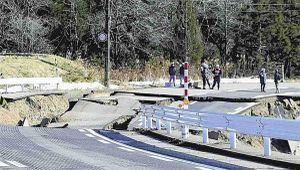The weather phenomenon known as DANA is making its way to Mexico starting February 1, 2025, markedly altering the climate conditions across several regions of the country.
Characterized by its isolated high-level depression, commonly referred to as 'gota fría' or cold drop, DANA is expected to bring considerable weather changes including heavy rains, strong winds, and cooler temperatures. According to meteorologists, this phenomenon is forecasted to primarily impact the northern and central parts of Mexico, especially states such as Coahuila, Nuevo León, Tamaulipas, and Zacatecas.
Reports from Meteored indicate the hot conditions typical of late January will give way to DANA, which could lead to temperature drops and increased precipitation levels. The Mexican Meteorological Service (SMN) has recommended residents remain informed and prepare for the changes expected over the weekend.
The DANA system occurs when a cold air mass detaches from the upper wind currents, causing instability. This results not only in increased rainfall but can also lead to severe weather conditions, such as thunderstorms and hail. The predicted timeline for this weather system spans from February 1 to February 3, with scattered storms likely across various regions.
Specific areas anticipated to feel the brunt of DANA's impact include San Luis Potosí, Querétaro, Hidalgo, the State of Mexico, Mexico City, Morelos, Puebla, Tlaxcala, Veracruz, Oaxaca, Coahuila, Nuevo León, and Tamaulipas. A notable aspect of this phenomenon is its potential to create 'sudden storms', which can bring with them significant localized downpours and hail.
For these states, authorities are advising residents to take preventative measures. The anticipated precipitation and the subsequent drop-in temperature might pose risks such as localized flooding or landslides. Dangerous weather conditions require preparedness; hence, several safety protocols have been proposed, including staying indoors, securing windows and doors against wind and rain, and avoiding walks during storms.
Weather experts recommend being cautious of electrical hazards during thunderstorms, urging residents to refrain from taking showers during such events as water acts as a good electrical conduit.
Interestingly, these weather patterns are becoming more pronounced due to the overarching challenges posed by climate change, which accelerates shifts toward extreme weather events across Mexico. The nation has been grappling with its dual climate crises—prolonged droughts affecting the north, and severe storms impacting the southern regions. The DANA phenomenon serves as yet another test for the affected communities, bearing witness to the broader trend of increasing climate volatility.
Authorities have emphasized the importance of improving early warning systems to mitigate the effects of severe weather events like DANA. Improved notifications can help local governments facilitate timely evacuations and other preventive measures to protect at-risk populations.
Despite being difficult to predict, DANA has become part of Mexico's growing list of severe weather phenomena possibly exacerbated by modern climate change. The impacts of these changes are felt most acutely by agricultural sectors, where erratic rain patterns threaten food security.
Overall, DANA's impending arrival has incited concerns but also demonstrates the resilience of communities as they prepare for the unpredictable weather events now commonplace with global climate challenges.



